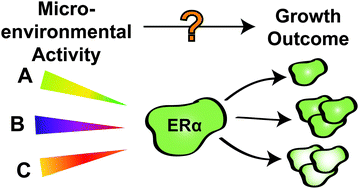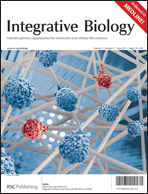Breast cancer cell growth and therapeutic response are manipulated extrinsically by microenvironment signals. Despite recognition of the importance of the microenvironment in a variety of tumor processes, predictive measures that incorporate the activity of the surrounding cellular environment are lacking. In contrast, tumor cell biomarkers are well established in the clinic. Expression of Estrogen Receptor-alpha (ERα) is the primary defining feature of hormonally responsive tumors and is the molecular target of therapy in the most commonly diagnosed molecular subtype of breast cancer. While a number of soluble factors have been implicated in ERα activation, the complexity of signaling between the cellular microenvironment and the cancer cell implies multivariate control. The cumulative impact of the microenvironment signaling, which we define as microenvironmental activity, is more difficult to predict than the sum of its parts. Here we tested the impact of an array of microenvironments on ERα signaling utilizing a microfluidic co-culture model. Quantitative immunofluorescence was employed to assess changes in ERα protein levels, combined with gene expression and phosphorylation status, as measures of activation. Analysis of microenvironment-induced growth under the same conditions revealed a previously undescribed correlation between growth and ERα protein down-regulation. These data suggest an expanded utility for the tumor biomarker ERα, in which the combination of dynamic regulation of ERα protein and growth in a breast cancer biosensor cell become a read-out of the microenvironmental activity.

You have access to this article
 Please wait while we load your content...
Something went wrong. Try again?
Please wait while we load your content...
Something went wrong. Try again?


 Please wait while we load your content...
Please wait while we load your content...